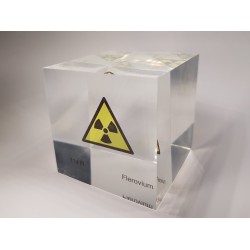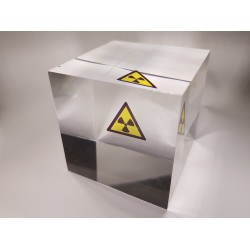- Shop
- Acrylic cubes
-
Elements
- Hydrogen
- Helium
- Lithium
- Beryllium
- Boron
- Carbon
- Nitrogen
- Oxygen
- Fluorine
- Neon
- Sodium
- Magnesium
- Aluminium
- Silicon
- Phosphorus
- Sulfur
- Chlorine
- Argon
- Potassium
- Calcium
- Scandium
- Titanium
- Vanadium
- Chromium
- Manganese
- Iron
- Cobalt
- Nickel
- Copper
- Zinc
- Gallium
- Germanium
- Arsenic
- Selenium
- Bromine
- Krypton
- Rubidium
- Strontium
- Yttrium
- Zirconium
- Niobium
- Molybdenum
- Technetium
- Ruthenium
- Rhodium
- Palladium
- Silver
- Cadmium
- Indium
- Tin
- Antimony
- Tellurium
- Iodine
- Xenon
- Cesium
- Barium
- Lanthanum
- Cerium
- Praseodymium
- Neodymium
- Promethium
- Samarium
- Europium
- Gadolinium
- Terbium
- Dysprosium
- Holmium
- Erbium
- Thulium
- Ytterbium
- Lutetium
- Hafnium
- Tantalum
- Tungsten
- Rhenium
- Osmium
- Iridium
- Platinum
- Gold
- Mercury
- Thallium
- Lead
- Bismuth
- Polonium
- Astatine
- Radon
- Francium
- Radium
- Actinium
- Thorium
- Protactinium
- Uranium
- Neptunium
- Plutonium
- Americium
- Curium
- Berkelium
- Californium
- Einsteinium
- Fermium
- Mendelewium
- Nobelium
- Lawrencium
- Rutherfordium
- Dubnium
- Seaborgium
- Bohrium
- Hassium
- Meitnerium
- Darmstadtium
- Roentgenium
- Copernicium
- Nihonium
- Flerovium
- Moscovium
- Livermorium
- Tennessine
- Oganesson
- Buch
- References
- Periodic Tables
- Metalle Wimmer
- Metametals
Flerovium
Flerovium, with the chemical symbol Fl and atomic number 114, is an artificially produced chemical element that was first synthesized in 1999 at the Joint Institute for Nuclear Research (JINR) in Dubna, Russia. The discovery is credited to the research of Yuri Oganessian, Vladimir Utyonkov, and their teams. Flerovium was created through the fusion of plutonium-244 with calcium-48 nuclei.
The name "Flerovium" honors the Russian physicist Georgi Flerov, who made significant contributions to nuclear physics and the discovery of new elements. The naming acknowledges Flerov's influence on the exploration of heavy elements. The discovery of Flerovium was a milestone in the synthesis and exploration of the heaviest elements in the periodic table. Flerovium is extremely rare on Earth and does not occur naturally. It is artificially produced in particle accelerators and has limited applications, mainly in scientific research to study the properties of transuranic elements.
The key Flerovium isotopes are Flerovium-289 and Flerovium-290. Flerovium-289 has a half-life of about 2.6 seconds, while Flerovium-290 is approximately 19 seconds.
There are 2 products.
Active filters


